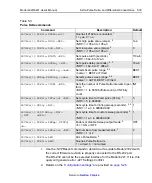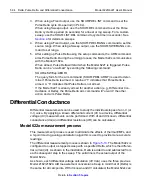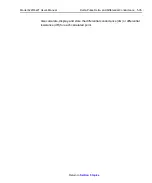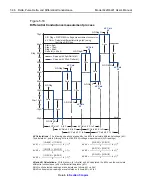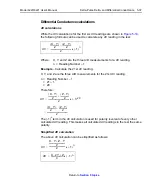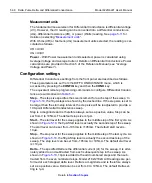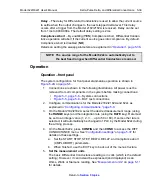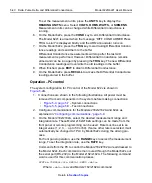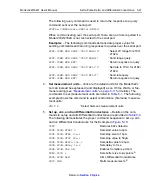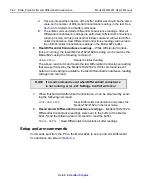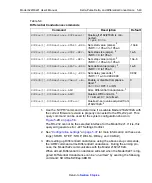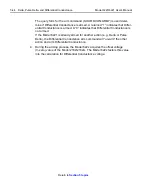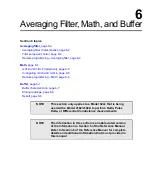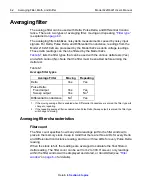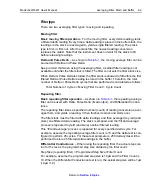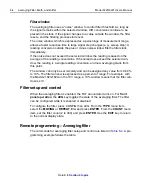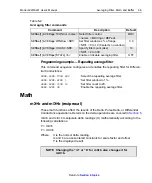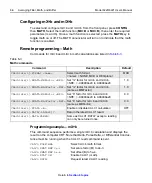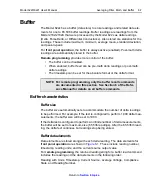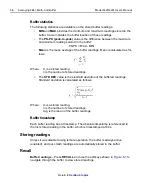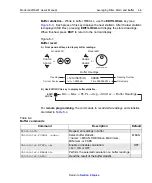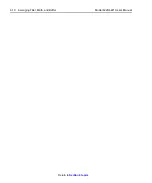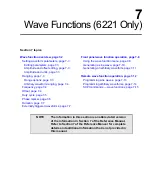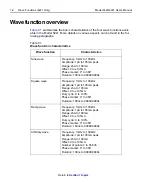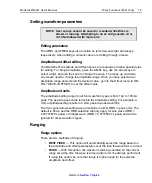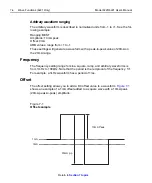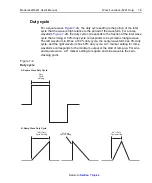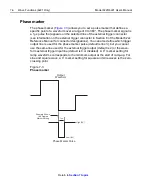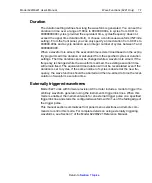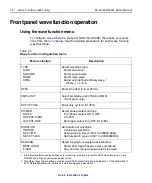
Model 6220/6221 User’s Manual
Averaging Filter, Math, and Buffer
6-3
Return to
Filter type
There are two averaging filter types: moving and repeating.
Moving filter
Basic moving filter operation
– For the moving filter, every delta reading yields
a filtered delta reading. Every time a delta reading is placed in the buffer stack, the
readings in the stack are averaged to yield a single filtered reading. The stack
type is first-in, first-out. After the stack fills, the newest reading conversion
replaces the oldest. Note that the instrument does not wait for the stack to fill
before releasing readings.
Delta and Pulse Delta
– As shown in
, the moving average filter can be
be used with Delta and Pulse Delta.
Keep in mind that when using the averaging filter, a settled filter reading is not
available until after the filter stack is filled. The filter count sets the filter stack size.
When Delta or Pulse Delta is started, the filter stack is allowed to fill before the first
filtered Delta or Pulse Delta reading is stored in the buffer. Therefore, the total
number of Delta or Pulse Delta cycles that are performed is calculated as follows:
Total Number of Cycles = Moving Filter Count + Cycle Count
Repeating filter
Basic repeating filter operation
– As shown in
, the repeating average
filter can be used with Delta, Pulse Delta (fixed output), and Differential Conduc-
tance.
The repeating filter takes a specified number (count) of reading conversions, aver-
ages them, and yields a reading. It then flushes its stack and starts over.
The filter stack must be filled with delta readings and then averaged to yield (and
store) one filtered delta reading. The stack is emptied, and the “fill and average”
process is repeated to yield (and store) another filtered reading.
This “fill and average” process is repeated for every specified delta cycle. For
example, assume the repeating average filter count is 10 and the delta test is con-
figured to perform 25 cycles. For these test parameters, 250 delta cycles will be
performed to store 25 filtered delta readings in the buffer.
Differential Conductance
– When using the repeating filter, the actual step size
run for the test is the programmed step size divided by the filter count:
Step Size (repeating filter) = Programmed Step Size / Filter Count
For example, assume the programmed step size is 10µA and the Filter Count is
10. When the Differential Conductance test is run, the actual step size will be 1µA
(10µA / 10).
Summary of Contents for 6220 DC
Page 2: ......
Page 4: ......
Page 6: ......
Page 16: ......
Page 36: ...1 20 Getting Started Model 6220 6221 User s Manual Return to Section 1 topics...
Page 131: ...6 10 Averaging Filter Math and Buffer Model 6220 6221 User s Manual Return to Section 6 topics...
Page 148: ...A Specifications...
Page 167: ......
Page 169: ......
Page 170: ......

